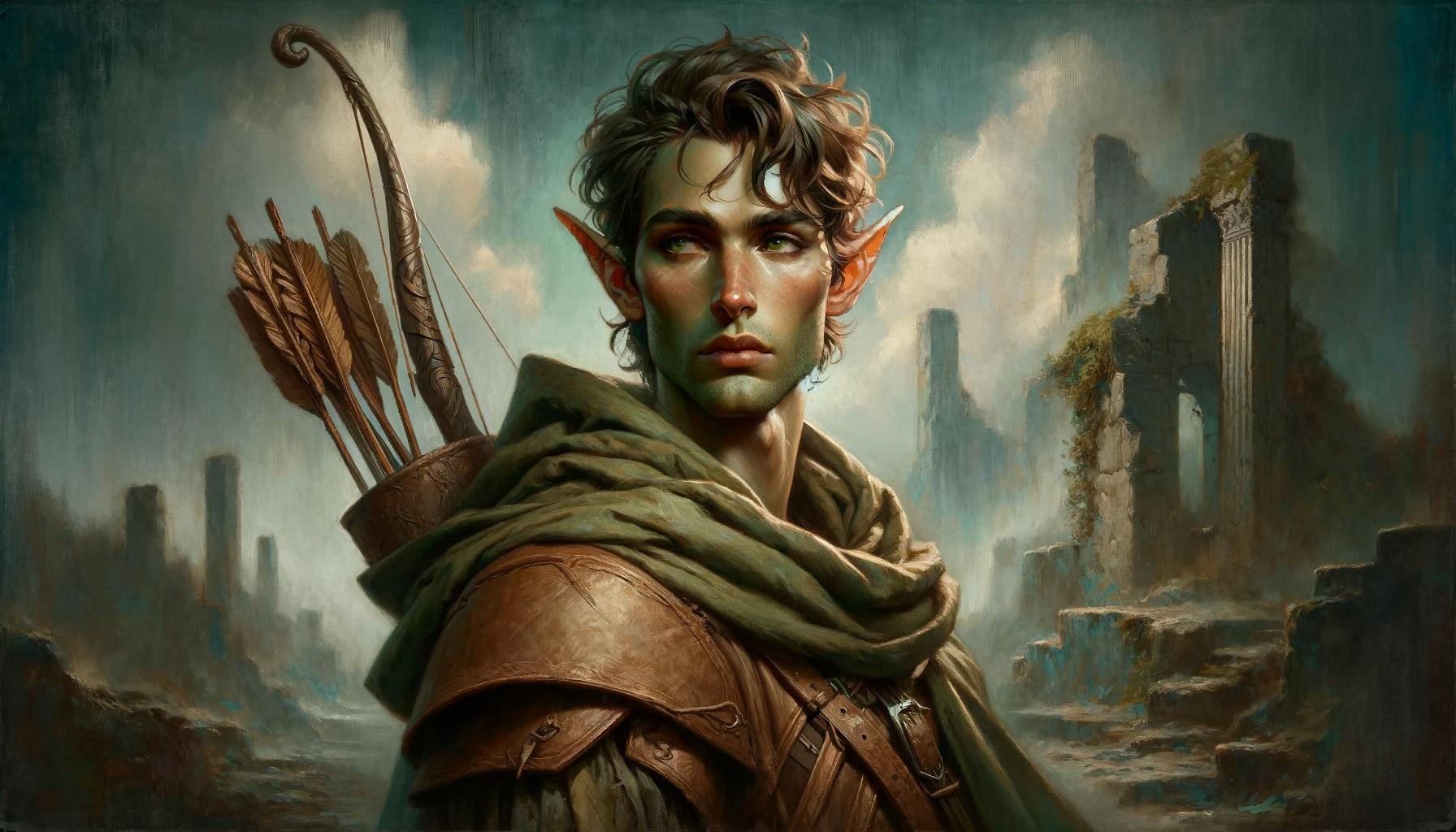Wood Elves are a swift and agile subrace of elves deeply connected to the natural world. They dwell in ancient forests, living in harmony with the wilderness and its inhabitants. Wood Elves are known for their keen senses, especially in the wild, and they possess unmatched speed and stealth, making them excellent hunters and scouts.
Society and Culture
Wood Elves live in harmony with the dense forests that span the land, forming communities that are as much a part of the natural landscape as the trees themselves. Their architecture blends seamlessly with the environment, utilizing living wood and natural materials to create homes that are both beautiful and sustainable. Wood Elves value tradition, and their culture is rich with ancient rituals that celebrate the cycles of nature—from the changing seasons to the phases of the moon. Music, art, and storytelling are integral to their way of life, with tales that speak of the forest’s history, its spirits, and the Wood Elves’ place within it. They are adept at using natural resources to craft weapons and tools that are both functional and ornamental, often imbued with magic to better serve their needs.
Relations with Other Races
Wood Elves are known for their reclusiveness, preferring the company of their own kind and the creatures of the forest. However, they are not unfriendly; they maintain peaceful relations with neighboring races, especially those who share their respect for the natural world. Wood Elves are wary of races that threaten the balance of their environment, and they defend their lands fiercely against such encroachments. Despite their caution, they have been known to ally with other races in times of need, particularly when the natural world is at risk. Their unparalleled knowledge of the forest makes them valuable allies, and their ability to move unseen through the woods can turn the tide in their favor.
Wood Elf Adventurers
Wood Elves venture out of their forests for various reasons. Some are drawn by the lure of exploration, seeking to discover the wonders of the world beyond their woodland realms. Others take up the mantle of adventurer to combat threats that endanger not only their homes but the natural order itself. Wood Elf adventurers bring a unique set of skills to any party, blending stealth, agility, and a profound understanding of magic and nature. Their deep connection to the forest grants them abilities that are both mystical and martial, making them excellent scouts, rangers, and spellcasters. For a Wood Elf, the journey of an adventurer is not just a path to personal glory but a means to protect the ancient bond between their people and the wilds.
Age
Although wood elves reach physical maturity at about the same age as humans, the elven understanding of adulthood goes beyond physical growth to encompass worldly experience. A wood elf typically claims adulthood and an adult name around the age of 50 and can live to be 750 years old.Size
Elves range from under 5 to over 6 feet tall and have slender builds.Your size is medium.
Speed
Your base walking speed is 35 feet.
Your base swimming speed is 17 feet*.
Your base climbing speed is 17 feet*.
* calculated speed.
Languages
You can speak, read, and write: Common, Elvish, Sylvan.
Ability Score Increase
- Wisdom: +1
- Dexterity: +2
Skill Proficiency
You have the following skills: Perception, Survival.
Race Features
You have all the features of your parent race, Elf, plus the following:
Wood Elf Weapon Training
You are an excellent marksman and are proficient with the longbow and shortbow. You have proficiency with shortswords and handaxes as well.
Wild Camouflage
You can attempt to hide in most natural conditions, even when you are only lightly obscured.
Natural Magician
You know the Druidcraft cantrip. Once you reach 3rd level, you can cast the Entangle spell once per day as a 2nd-level spell. Intelligence is your spellcasting ability for these spells, mirroring your affinity with woodland magic.
Spirit of the Wild
You have proficiency in the Survival skill. Your life in the forest has taught you how to live off the land, track beasts, and navigate the deepest woods.
Darkvision
Accustomed to twilit forests and the night sky, you have superior vision in dark and dim conditions. You can see in dim light within 60 feet of you as if it were bright light, and in darkness as if it were dim light. You can’t discern color in darkness, only shades of gray.
Keen Senses
You have proficiency in the Perception skill.
Fey Ancestry
You have advantage on saving throws against being charmed, and magic can’t put you to sleep.
Trance
Elves don’t need to sleep. Instead, they meditate deeply, remaining semiconscious, for 4 hours a day. (The Common word for such meditation is “trance.”) While meditating, you can dream after a fashion; such dreams are actually mental exercises that have become reflexive through years of practice. After resting in this way, you gain the same benefit that a human does from 8 hours of sleep.
Lore
The Stream
Credits: Game Squires

